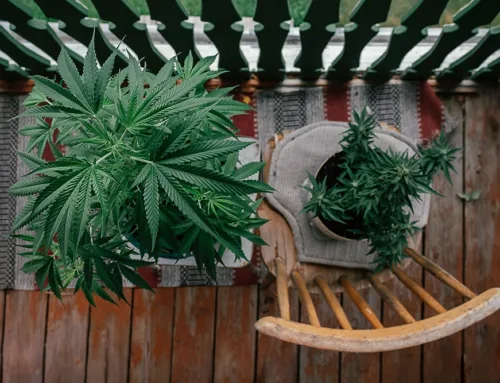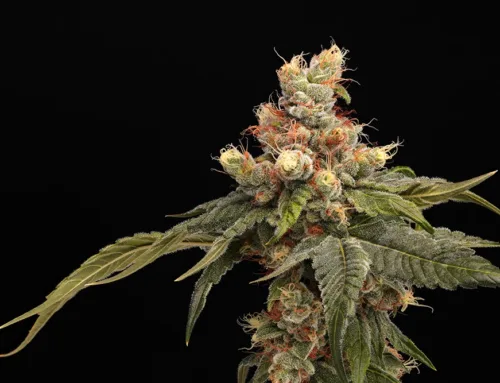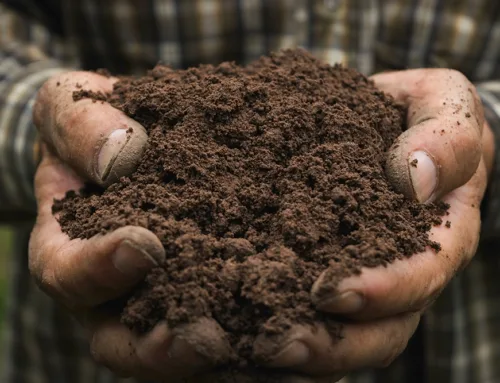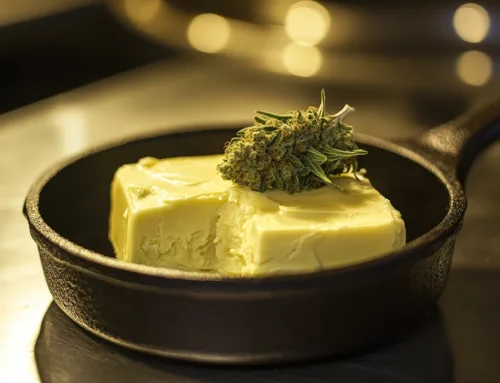Cannabis Leaves Turning Yellow?
Why Are My Cannabis Plant Leaves Turning Yellow?
Cannabis plants are known for their beautiful green leaves, but what happens to weed plant leaves turning yellow? There are many reasons you might see yellow leaves on weed plants, either due to natural elements like temperature fluctuations or pests including insects, fungus, and bacteria. Improper feeding, watering, and light burn may also induce yellow leaves. Let’s explore the different forms of chlorosis and how you can prevent and treat it.
Natural elements that cause yellow cannabis leaves
It is important to remember that there are natural common causes of yellow cannabis leaves. From severe temperature fluctuations to pests such as insects, fungi, or bacteria. It’s important to make observations of your environment to determine the possible cause.
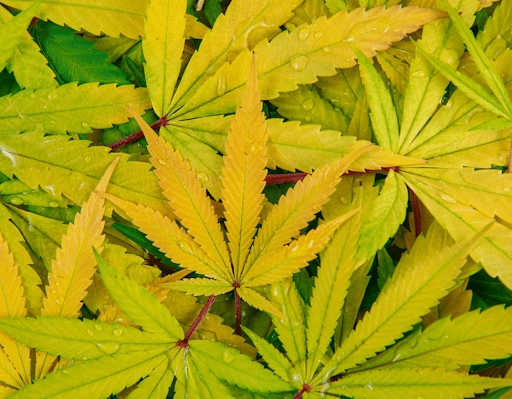
Cold weather
Cold weather, for example, can cause leaves to turn yellow as the plant adjusts to lower temperatures. These cold temperatures tend to turn leaves purple as well. If you begin to see fan leaves turning yellow during weeks of flowering this change of color is called the fade and is quite natural. As plants begin to senesce, they deteriorate with age and some of their leaves will begin to change color. Take extra care when trimming fan leaves during flowering if you see an abundance of yellow.
Hot weather
Heat stress can also lead to yellow cannabis leaves, especially if the plants are exposed to high temperatures for extended periods without proper air circulation. When cannabis plants are exposed to high temperatures for prolonged periods, they may not be able to process nutrients properly leading to chlorosis.
High temperatures can also increase transpiration rates, leading to water loss from the leaves, which can cause them to turn yellow and wilt. Chlorosis due to heat stress often starts at the tips and edges and progresses toward the center of the leaf. In extreme cases, the leaves may also curl or become crispy.

Weed plant yellow leaves.
Growers can prevent heat stress by maintaining optimal temperature and humidity levels in the growing space, using fans or air conditioning to keep the temperature in check, or using shade cloth to protect the plants from direct sunlight during the hottest part of the day. If you consistently experience high temperatures, consider growing strains like Humboldt Dream which loves high temperatures.
You can reduce your plant’s chance of heat stress by using yucca root concentrate in every water and foliar application. This desert plant increases your plant’s stress response to things like heat and drought. And when used regularly can reduce your chances of encountering yellow leaves.
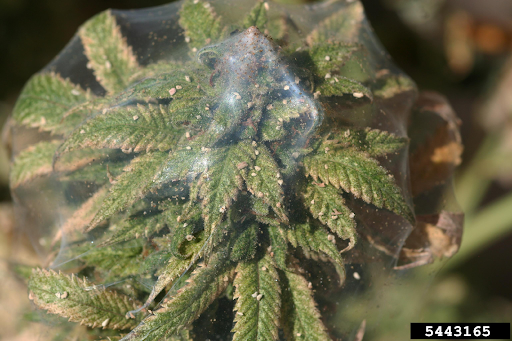
Pests
Pests, such as spider mites, thrips, fungus gnats, or aphids can damage the leaves, causing them to turn yellow. These insects feed on the cannabis plant by piercing the leaves and sucking out the sap. With spider mites and thrips, you will see stippling on the leaves before the leaves turn yellow. You should never allow an infestation to get to the point that your leaves turn yellow. You can reduce your chances of infestations by following an Integrated Pest Management plan, like those outlined in “The Organic Cannabis Pest Guide.”
Fungus
Fungal infections can also cause chlorosis. Two examples of fungal pathogens are Fusarium and Septoria. Fusarium is associated with root rot that causes the plant to wilt and leaves to turn yellow. While Septoria causes yellow spots on the leaves that eventually spread from the lower leaves to the upper canopy.
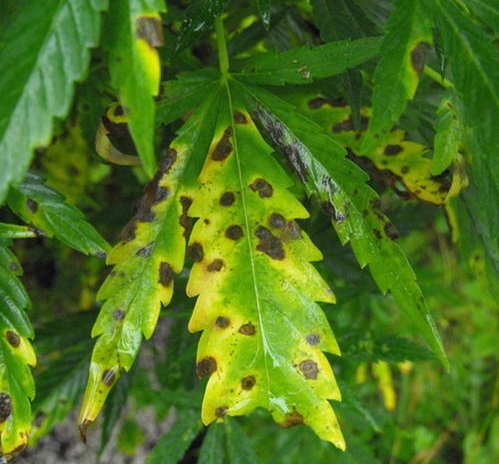
Dealing with brown or yellow spots on my weed leaves.
You can reduce your chances of fungal pathogen infection by maintaining proper watering practices, humidity, and airflow through pruning, and removing any infected tissue from your garden.
Bacteria
Bacterial infections can also cause yellowing of cannabis leaves. One of the most common bacterial infections that affect cannabis plants is Erwinia carotovora, which causes a condition called “soft rot.”
Bacterial infections can be challenging to treat, and prevention is often the best course of action. Growers can prevent bacterial infections by maintaining a clean environment, avoiding overwatering, and using disease-resistant cannabis strains, like Hella Jelly. If a bacterial infection is suspected, growers should isolate the infected plant and remove any affected leaves or stems to prevent the infection from spreading to other plants.
Why is my cannabis plant turning yellow?
Yellowing of cannabis leaves can be caused by a grower’s influence, such as nutrient deficiency, improper watering, and light burn. To prevent chlorosis, growers should ensure that their plants receive adequate nutrients, water, and light.
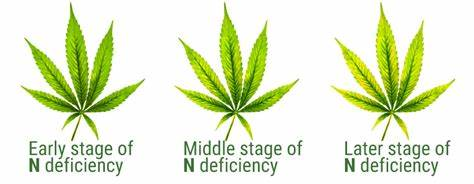
Leaves on weed plant turning yellow.
Nutrient deficiency
Nutrient deficiencies in cannabis plants can cause leaves to turn yellow. Nitrogen deficiency is one of the most common nutrient deficiencies and can turn marijuana yellow starting at the bottom of the plant and progressing upwards. Iron deficiency can also cause yellowing of leaves, but this typically starts at the top of the plant. Many micronutrient deficiencies are caused by toxicities of other nutrients or pH imbalances.
Proper pH levels are crucial for cannabis plants to absorb nutrients, and incorrect pH levels can cause a nutrient lockout, where the plant is unable to absorb certain nutrients, leading to deficiencies. For example, if the pH level of the growing medium is too high, above 6.5, the plant may not be able to absorb Iron, causing Iron deficiency and yellowing of leaves.
Improper watering
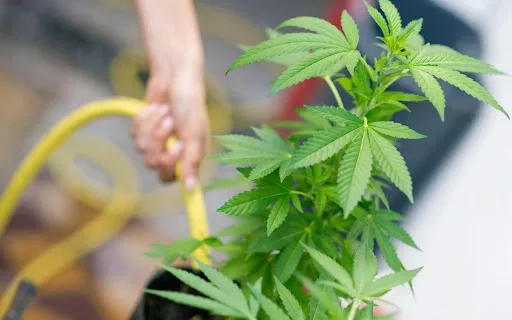
Improper watering can also cause yellowing of leaves in cannabis plants. Overwatering can lead to pathogen infection causing chlorosis. And underwatering can cause leaves to turn yellow by reducing nutrient uptake and stomatal closure. Growers can use a moisture meter or lift the plant to determine when it needs watering.
Light burn
If you are growing weed indoors your grow lights can cause light burn which may lead to yellow cannabis leaves. This occurs when the plant is exposed to too much light, either from powerful growing light or from being too close to the light source.
The leaves closest to the light may turn yellow or brown and have a burnt appearance. To prevent light burn, growers should ensure that their grow lights are the appropriate distance from their plants and adjust the height as the plants grow.
If you see a weed leaf turning yellow from light burn, you can move the light source further away from the plants or adjust the intensity of the light if possible. If the leaves have already turned yellow or brown, they cannot be saved, but it is important to correct the light source to prevent further damage to the plant.
Conclusion
Weed leaves turning yellow during veg, leaves turning yellow during flowering, or yellowing leaves at any stage, often called chlorosis, is a common problem for cannabis growers. Chlorosis is generally what causes yellow leaves on weed plants. But with proper care and attention, many issues can be prevented and treated. With a balanced environment, and proper ratio of nutrients and water you can reduce yellowing leaves in your garden.



